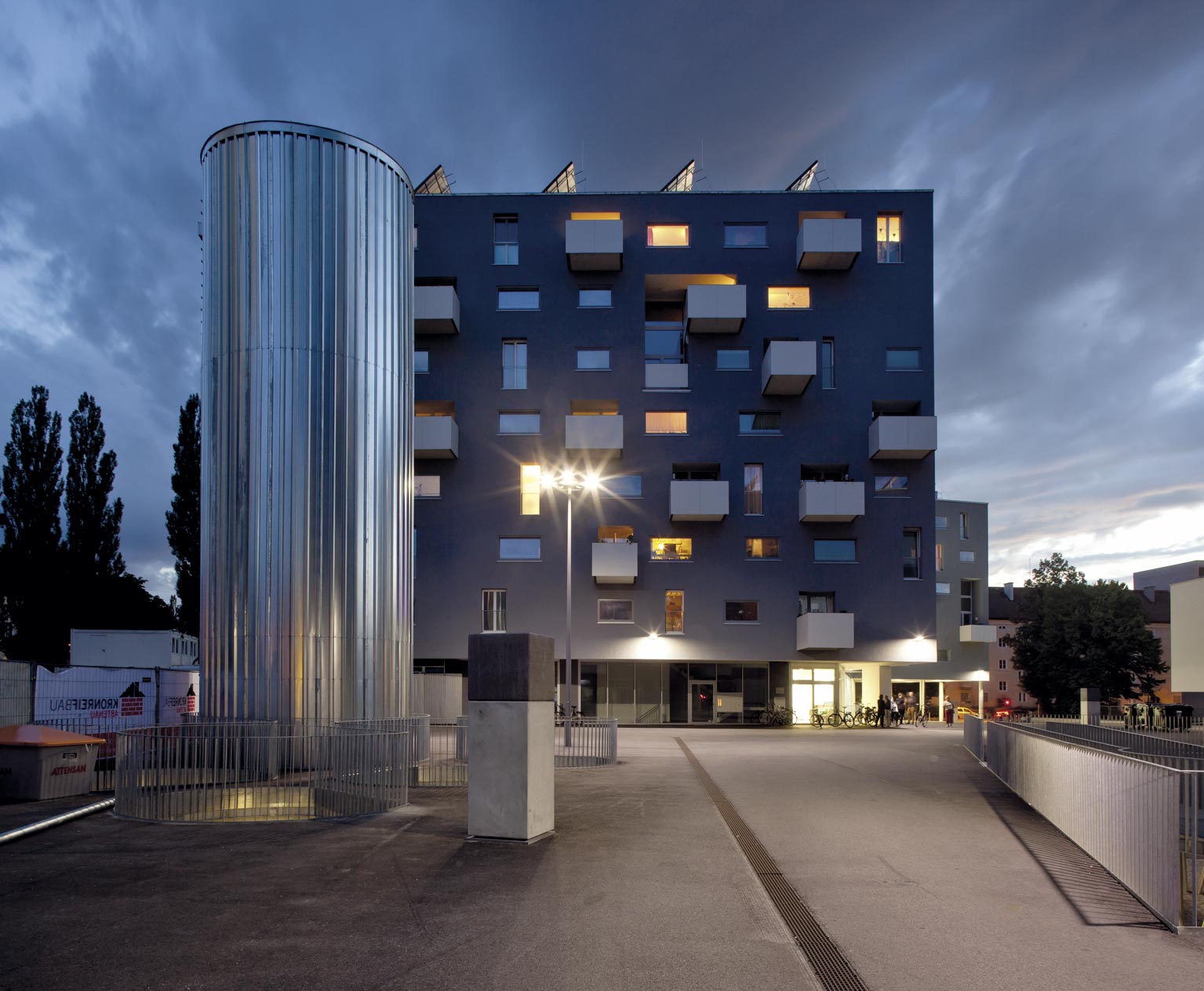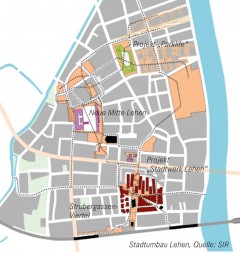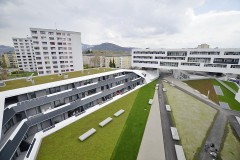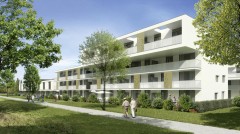As a Smart Grids Model Region, the City of Salzburg has a large repertoire of emission-reducing initiatives for climate protection. Building on this, the city has defined its vision for 2050 in a master plan and established a roadmap for developing into a Smart City. To restructure the energy system it is essential, amongst other things, to expand and optimize the district heating grid in line with city development strategies, make more use of renewable energy sources, reduce energy consumption massively in buildings and provide new options for mobility.
Innovative use of solar energy in the Lehen district
One of the flagship “Building of Tomorrow” projects is the restructuring of the Lehen district in Salzburg, where numerous building projects have been in progress since 2007. Parts of the overall project are being implemented within the framework of the EU initiative Concerto II “Green Solar Cities“.
On premises once occupied by the municipal utilities company, 287 apartments for rental, the new city gallery, a student hostel and a nursery school have been built. The existing office block has been renovated and equipped with modern offices, laboratories and conference rooms. The far-reaching renovation of the adjacent old neighbourhood, Strubergassensiedlung, has been carried out using the most up-to-date technologies. The showcase project “Stadtwerk Lehen“ with its sustainable energy strategy represents an important Austrian contribution within the research cooperation framework of the International Energy Agency (IEA-EBC Annex 51/Energy Efficient Buildings and Communities).
Energy on the premises is provided through a system which complements district heating with solar energy. The building Stadtwerk Lehen was equipped with a thermal solar facility with a collector area of 2,000 m2. The heat is collected in a central storage facility with a capacity of 200,000 litres. A solar heat pump enhances the system and increases the output by another 15 to 20 %. The heat is distributed via a low-temperature microgrid to flats and offices, as well as to renovated apartment blocks nearby. A photovoltaic facility with a rating of overall 20.16 kW on the roofs of the apartment blocks provides electricity for the shared facilities.
The next step was to conduct a building structure analysis in Salzburg in order to identify further neighbourhoods in need of a comprehensive renovation approach with sustainability in mind.
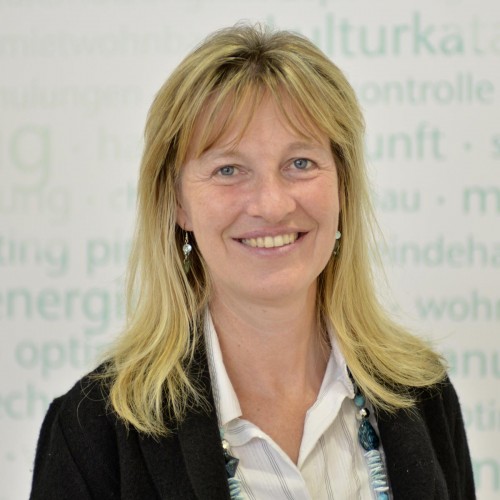
Inge Straßl, Salzburg Institute for Spatial Planning & Accommodation (SIR)
Rosa Zukunft – Smart Grid technologies in the field
Internationally Salzburg counts as a front runner in the development of intelligent solutions for electricity distribution grids. In close cooperation between researchers and industry, new technologies for tomorrow‘s electricity grids have been developed and put to the test since 2009 in Austria‘s first Smart Grid showcase region.
In the pioneer project HiT (buildings as interactive participants in a Smart Grid) all relevant Smart Grid low-voltage elements are linked up in an integrated building strategy. The project encompasses planning, constructing, running and monitoring an apartment complex with 130 flats (rented out and owner-occupied) for various groups of occupants. Here key issues to do with generating energy from renewable sources, building technologies and storage facilities, and electric-powered mobility, are investigated under real-life conditions.
The apartment complex has an intelligent energy management system able to control energy production and consumption (e.g. through automatic load redistribution) and to make use of existing storage facilities (e.g. batteries in electric vehicles). Environmentally friendly energy production from photovoltaic units and cogeneration are just as much part and parcel of the overall strategy as sustainable mobility for residents.
